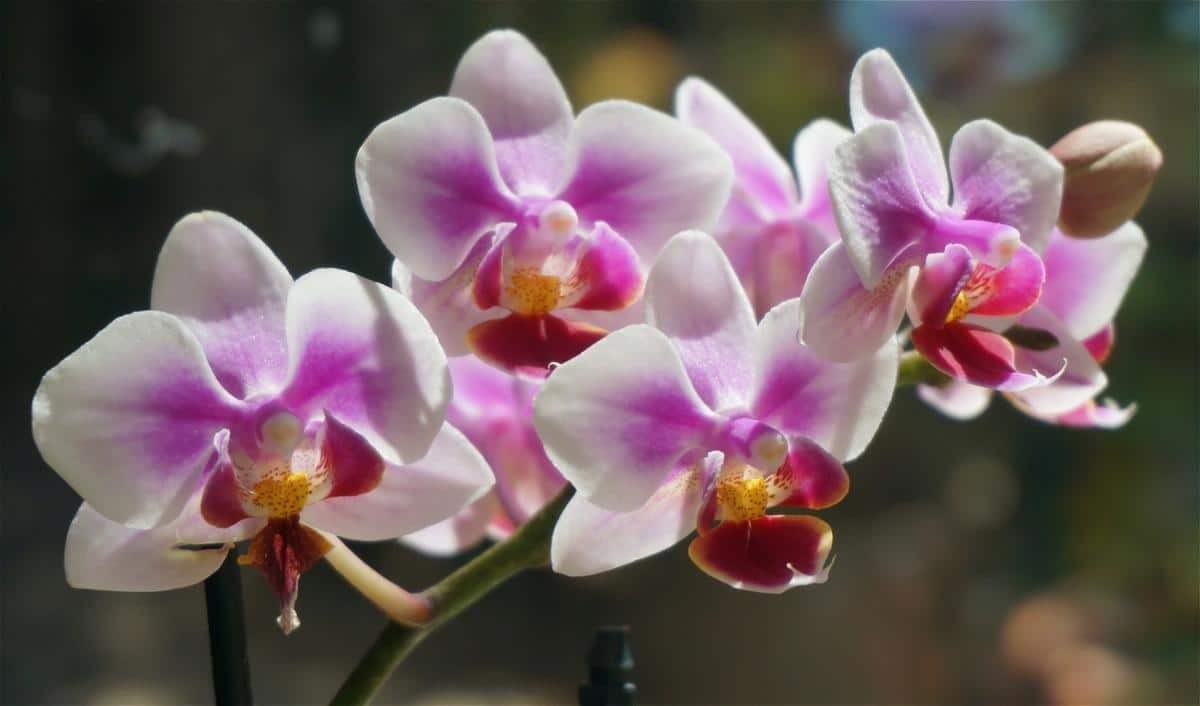
Orchids are flowers that, who more who less, has had from time to time in their home. They are very beautiful and elegant, formed by delicate petals dyed in very cheerful colors. But, in addition to watering them, another thing to do to be able to show them off is to provide them with a new container in which they can continue to grow.
How do you do that? It is very simple, so much so that regardless of whether you are a beginner or not, you will surely do it correctly, especially after reading how to transplant an orchid,
How are orchids transplanted?
To change our orchids pot we need the following:
- A flower pot: it must be made of transparent plastic if they are epiphytes (like Phalaenopsis), or colored if they are terrestrial.
- Substratum: pine bark if it is epiphytic, or coconut fiber with black peat mixed in equal parts in the case of terrestrial ones.
- Watering can: of the small 1l. A bottle with a perforated cap also works well (the holes must be small, so that the water does not run smoothly).
- Water: rain, lime-free or acidified with lemon (the juice of half a lemon in 1 liter of water).
- OPTIONAL: Balls of expanded clay or similar. They will help improve the drainage of the water.
Now that we have it all it's time to follow this step by step:
- First, we will water the orchid. This will make it easier to extract it.
- Then, we prepare your new pot, laying a layer of clay balls and the substrate.
- Next, we extract the plant and place it in its new container.
- Afterwards, we finish filling the pot with substrate.
- Finally, we give a good watering.
And then? Post-transplant care

Transplantation is unnatural for plants. From the time they take root in the ground until their end comes, they always remain in the same place. For this reason, when we take them out of their pots and place them in others during the first weeks we have to observe them, since it is most likely that they weaken a little. In the case of orchids, As soon as we transplant them we have to put them in a very bright place but without direct light, since otherwise its leaves would be burned.
Also, so that everything goes well it is highly recommended to water them the first month with homemade rooting hormones (here explains how to obtain them). Thus, they will be able to resume their growth.

Very interesting article. I have two epiphytic orchids, I transplanted them on crumbled araucaria bark and they took root but they stayed there, with a few leaves and they have never given flowers, what could be wrong?
Hello Fernando.
We are glad that you liked the article.
Regarding your question, they may not have enough space to be able to develop properly, or they may lack fertilizer. You can pay them with orchid fertilizers, sold in nurseries.
Anyway, if you can and want, upload an image to tinypic or imageshack, and copy the link here to see it. So we can tell you better.
A greeting.